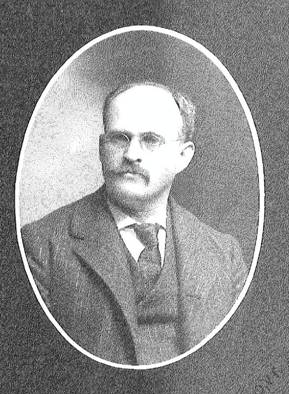(28 March 1863 – 25 November 1935)
The University of North Carolina at Chapel Hill Herbarium (NCU) has cataloged over 400 vascular plant specimens collected by Willard Webster Eggleston. Without doubt many more will be found as our cataloging continues. While NCU’s Eggleston specimens are diverse in taxon and locality, they are particularly rich in Crataegus from the southeastern United States.
Many (but not all) of NCU’s specimens collected by Eggleston were in a large gift that the Jesup Herbarium (HNH) of Dartmouth College made in 2002.
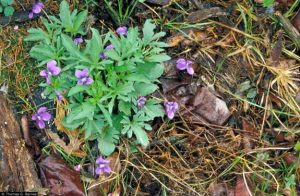
Willard Webster Eggleston was born on 28 March 1863 in Vermont to Mary Elizabeth Squier (1833 – ?) and Romaine James Eggleston (1836-1925), a farmer. “Willie” had at least three siblings: Clara E. (b. ca. 1860) and Bertell R. (b. ~ 1865), and J. H. (b. ~ 1871).1, 7 He attended the public schools of Rutland, Vermont, and was a track athlete in high school.7 “His interest in botany developed early, as was evidenced by his collection of several hundred wild plants of Vermont while in high school years at Rutland.”2 Eggleston graduated from Dartmouth College in 1891 with a Bachelor of Science then worked as a civil engineer in his hometown of Rutland from 1895 to 1897, but still found time to devote to his botanical interests. He was a founding member of the Vermont Botanical Club in 1895, and in collaboration with club members Ezra Brainerd and L. R. Jones authored Flora of Vermont: A List of the Fern and Seed Plants Growing without Cultivation in 1900.
In 1904 he became a research scholar at the New York Botanical Garden, then in 1908 went on to a long career at the United States Bureau of Plant Industry investigating plants poisonous to livestock.2 He retired from government service in 1933.6
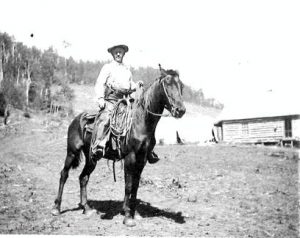
In August, 1910 Eggleston collected a sedge at Kebler Pass, Mount Carbon, Gunnison County, Colorado that Kenneth Kent Mackenzie named Carex egglestonii. The holotype is in United States National Herbarium (US), and an isotype is curated by the New York Botanical Garden Herbarum (NY).
W.W. Eggleston and fellow botanist Alma Louise Carpenter (1869-1951) were married in her hometown of Foxboro, Massachusetts on October 22, 1912.3, 5, 8
In the 1930’s Eggleston donated his personal herbarium of ca. 10,000 specimens to the Jesup Herbarium of Dartmouth College (HNH). 2 In 2002 the Jesup Herbarium gave specimens from the southeastern United States to the University of North Carolina at Chapel Hill Herbarium and many specimens from Eggleston’s herbarium were included.
In addition to Eggleston’s interests in systematic and economic botany, he was also studied the history and routes of early botanists in the United States, particularly Nuttall, Douglas and Geyer.8
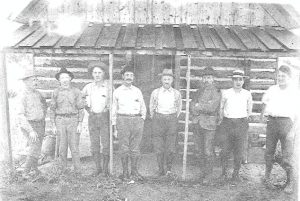
HANOVER, Feb. 22 [1942] Two Eggleston botany prizes have been established at Dartmouth college in memory of Willard W. Eggleston, an authority on plants poisonous to stock on the western ranges of this country, it was announced by Pres. Ernest Martin Hopkins today. The prizes, made possible by a fund given the college by Mrs. Eggleston of Washington, D.C., as a memorial to her husband, a member of the Dartmouth class of 1891, will be offered annually for botanical treatises comprising, at least in part, original investigations and study by a group of undergraduates and study by a group of undergraduates who have elected one or more courses in botany… Shortly before his death in 1935, he presented to the Jesup Herbarium at Dartmouth over 10,000 specimens of plants which he had collected during his extensive travels throughout the United States. Since his death, Mrs. Eggleston has given the college 5,000 additional specimens, his library of scientific books and papers, and his extensive correspondence with the botanists of the day. 6
W. W. Eggleston Botany Prize winners include Chelsea Little (2009), James Vaughn Staros (1969; currently Provost & Sr. Vice Chancellor for Academic Affairs at University of Massachusetts, Amherst), and Thomas Dyer Seeley (1972; currently Professor & Chair of Dept. of Neurobiology & Behavior at Cornell University). “I remember receiving the W.W. Eggleston Botany Prize at the end of my sophomore year at Dartmouth,” recalled Dr. Seeley, “and that I used the $50 dollars from the prize to purchase a down sleeping bag, which made my own fieldwork as a biologist much more pleasant. I can see now that WW would probably have approved of this use of his legacy!” 10
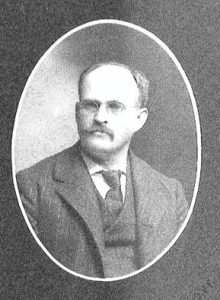
A plethora of plants were named in Willard Webster Eggleston’s honor; only a few of the names remain in current use.
Arabis egglestonii Rydb.
Astragalus egglestonii (Rydb.) Kearney & Peebles “Eggleston’s milkvetch”
Carex egglestonii Mack. “Eggleston’s sedge”
Crataegus brainerdii var. egglestonii (Sarg.) B.L. Rob.
Crataegus egglestonei Sarg.
Crataegus scabrida var. egglestonii (Sarg.) Kruschke
Lupinus sericeus ssp. sericeus var. egglestonianus C.P. Sm.
Lupinus sericeus var. egglestonianus C.P. Sm. “silky lupine”
Myosurus egglestonii Wooton & Standl.
Quercus X egglestonii Trel. “Eggleston’s oak”
Rubus egglestonii Blanch.
Rubus idaeus var. egglstonii (Blanch.) Fern.
Viola egglestonii Brainerd
Viola septemloba ssp. egglestonii (Brainerd) L.E. McKinney
Viola septemloba var. egglestonii (Brainerd) R.J. Little & L.E. McKinney
PUBLICATIONS (incomplete list):
Eggleston, W. W. (1895) The flora of Mt. Mansfield. Botanical Gazette 20(2): 72-75.
— (1895) Astragalus blakei. Botanical Gazette 20: 271.
Eggleston, W.W. and J.R. Jones, eds. (1899) Trees of Vermont. Vermont Agr. Exp. Station Bulletin 73: 35-83.
Vermont Botanical Club (1900) Flora of Vermont: a list of the fern and seed plants growing without cultivation. Burlington, VT: Free Press Association. (The members of the Vermont Botanical Club that produced this book were Ezra Brainerd, L. [Lewis] R. [Ralph] Jones and W. W. Eggleston.)
Eggleston, W.W. (1901) Vermont plants. (includes Mt. Washington plants). [citation incomplete]
— (1904) Addenda to the Flora of Vermont. Rhodora 6: 137-144.
— (1904) A canoe trip on the St. Francis River, northern Maine. Torreya 4(5): 65-68.
— (1904) The Crataegi of Fort Frederick, Crown Point, New York. Torreya 4(3): 38-39.
— (1905) Fern flora of Vermont. Rhodora 6: 137-144.
— (1906) Crataegus of Dutchess County, New York. Torreya 6(4): 63-67.
— (1907) Flora of Pownal. Bulletin of the Vermont Botanical Club 2: 21-24.
— (1907) New North American Crataegi. Torreya 7(2): 35-36.
— (1907) Crataegus in New Mexico. Torreya 7(12): 235-236.
— (1908) Crataegus IN Trees of North America, Britton & Shafer, eds. pp. 443-482. [citation incomplete]
— (1908) Crataegi of the northeastern United States and adjacent Canada. Rhodora 10: 73-84.
— (?) Rosaceae IN Vermont Shrubs and Woody Vines. Vermont Agr. Exp. Station Bulletin 145. [citation incomplete]
— (1909) The Cragaegi of Mexico and Central America. Bull. Torrey Bot. Club 36(9): 501-514.
— (1909) New North American Crataegi. Bull. Torrey Bot. Club 36(11): 639-642.
— (1910) Sketch of the Crataegus problem with special reference to work in the South. Journal. N.Y. Bot. Garden 11: 78-83.
— (1911) New Crataegi of the Northeastern Manual Range. Bull. Torrey Bot. Club 38(5): 243-244.
— (1912) Apple family, Deam’s trees of Indiana. 11th Ann. Rep., Ind. State Board of Forestry, 251-280.
— (1912) Crataegus IN Heller’s Cat. N. Am. Pl., ed. 3, pp. 169-193.
— (1913) Crataegus IN Britton & Brown Ill. Flora, ed. 2, 2: 294-381.
— (1914) Menziesia, a new stock-poisoning plant of the northwest States. U.S. Dept. Agr. Circ. June 10, 1914.
— (1915) Flora of Vermont. Vt. Agr. Exp. Station Bull. 137: 137-258. (Eggleston was principal editor and joint author.)
— (1920) The whorled milkweed (Asclepias galioides) as a poisonous plant. U.S. Dept. Agr. Bull. 200: 5-8.
— (1920) Baccharis pteronioides as a poisonous plant of the Southwest. J. Am. Vet. Med. Assoc. 57: 430-434.
— (1921) Poisonous properties of the Whorled Milkweeds Asclepias pumila and A. verticillata var. geyeri. U.S. Dept. Agr. Bulletin 942.
— (1921) The Mexican Whorled Milkweed (Asclepias mexicana) as a poisonous plant. U.S. Dept. Agr. Bulletin 969.
— (1921) Western Sneezeweed (Helenium hoopesii) as a poisonous plant. U.S. Dept. Agr. Bulletin 947.
— (1923) The poisonous properties of Bikukullacucullaria and B. canadensis. J. Agr. Res. [incomplete citation]
— (?) New North American Crataegi. Bull. Torr. Bot. Club 36(11): 639-642. [citation incomplete]
— (1926) The early botanists of the Green Mountains, with an account of C.C. Frost’s visit to Mt. Mansfield and Smuggler’s Notch, 12 Aug. 1851. Joint Bull. Vermont Bot. Bird Club 11: 19-28.
Eggleston, W.W., O.F. Black and J.W. Kelly (1930?) A botanical and chemical study of Bikukulla eximia with a key to North American species of Bikukulla. Jornal of Agricultural Research. [full citation needed; possibly October 1930 issue]
Eggleston, W.W. (?) Dr. Ezra Brainerd. [incomplete citation]
— (?) Dr. Joseph Whitney Barstow. [incomplete citation]
— (?) Alphonso Wood’s description of Willoughby Lake and its flora. [incomplete citation]
— (?) Charles C. Frost’s trip to Willoughby Mountain. [incomplete citation]

SOURCES:
1. 1870 United States census.
2. Sargent, H.E. (1936) Willard Webster Eggleston. Dartmouth Alumni Magazine, March 1936.
3. Preliminary War Record. Dartmouth College Archives.
4. 50th Class Report. Dartmouth College Archives.
5. Willard Webster Eggleston. Find A Grave Memorial #20977450. Accessed on 27 November 2012. www.findagrave.com
6. Botany Prizes Honor Memory of Eggleston. Manchester Union, Feb. 23, 1942.
7. Willard Eggleston dies in Washington. Rutland Herald, Nov. 27, 1935.
8. Copy of information prepared for Research Information Service, National Research Council, Jan. 3, 1923. Dartmouth College Archives.
9. 1940 United States census: Rocky Mount City, Edgecombe County, North Carolina.
10. Personal communication, Seeley to McCormick 27 November 2012.
Information compiled by Carol Ann McCormick & Dr. Mark Peifer, Hooker Distinguished Professor, Biology Department, University of North Carolina at Chapel Hill . Special thanks to Sarah Hartwell, Rauner Special Collections Library, Dartmouth College,
for providing photographs & documents from Willard Webster Eggleston’s file in the Archives.
